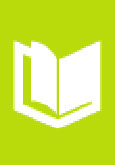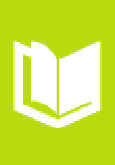Information on soil properties is crucial for soil preservation, the improvement of food security, and the provision of ecosystem services. In particular, for the African continent, spatially explicit information on soils and their ability to sustain these services is still scarce. To address data gaps, infrared spectroscopy has achieved great success as a cost-effective solution to quantify soil properties in recent decades. Here, we present a mid-infrared soil spectral library (SSL) for central Africa (CSSL) that can predict key soil properties, allowing for future soil estimates with a minimal need for expensive and time-consuming wet chemistry. Currently, our CSSL contains over 1800 soil samples from 10 distinct geoclimatic regions throughout the Congo Basin and along the Albertine Rift. For the analysis, we selected six regions from the CSSL, for which we built predictive models for total carbon (TC) and total nitrogen (TN) using an existing continental SSL (African Soil Information Service, AfSIS SSL; nCombining double low line1902) that does not include central African soils. Using memory-based learning (MBL), we explored three different strategies at decreasing degrees of geographic extrapolation, using models built with (1) the AfSIS SSL only, (2) AfSIS SSL combined with the five remaining central African regions, and (3) a combination of AfSIS SSL, the remaining five regions, and selected samples from the target region (spiking). For this last strategy we introduce a method for spiking MBL models. We found that when using the AfSIS SSL only to predict the six central African regions, the root mean square error of the predictions (RMSEpred) was between 3.85-8.74 and 0.40-1.66gkg-1 for TC and TN, respectively. The ratio of performance to the interquartile distance (RPIQpred) ranged between 0.96-3.95 for TC and 0.59-2.86 for TN. While the effect of the second strategy compared to the first strategy was mixed, the third strategy, spiking with samples from the target regions, could clearly reduce the RMSEpred to 3.19-7.32gkg-1 for TC and 0.24-0.89gkg-1 for TN. RPIQpred values were increased to ranges of 1.43-5.48 and 1.62-4.45 for TC and TN, respectively. In general, predicted TC and TN for soils of each of the six regions were accurate; the effect of spiking and avoiding geographical extrapolation was noticeably large. We conclude that our CSSL adds valuable soil diversity that can improve predictions for the Congo Basin region compared to using the continental AfSIS SSL alone; thus, analyses of other soils in central Africa will be able to profit from a more diverse spectral feature space. Given these promising results, the library comprises an important tool to facilitate economical soil analyses and predict soil properties in an understudied yet critical region of Africa. Our SSL is openly available for application and for enlargement with more spectral and reference data to further improve soil diagnostic accuracy and cost-effectiveness. © Author(s) 2021.
DOI:
https://doi.org/10.5194/soil-7-693-2021
Altmetric score:
Dimensions Citation Count:

Publication year
2021
Authors
Summerauer, L.; Baumann, P.; Ramirez-Lopez, L.; Barthel, M.; Bauters, M.; Bukombe, B.; Reichenbach, M.; Boeckx, P.; Kearsley, E.; van Oost, K.; Vanlauwe, B.; Chiragaga, D.; Heri-Kazi, A.B.; Moonen, P.; Sila, A.; Shepherd, K.; Bazirake, Mujinya, B.; van Ranst, E.; Baert, G.; Doetterl, S.; Six, J.
Language
English
Keywords
spectroscopy, soil carbon, soil nitrogen, soil properties, spectral analysis
Geographic
Democratic Republic of the Congo























